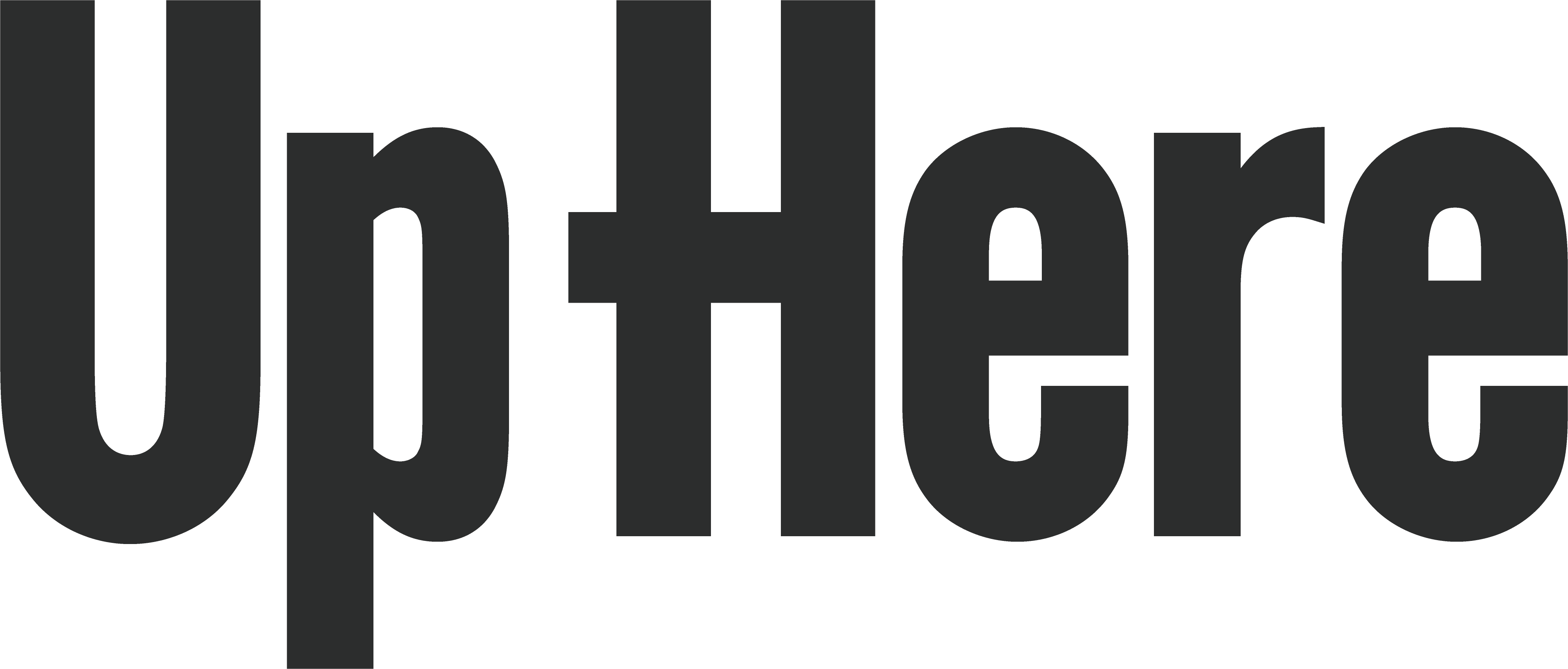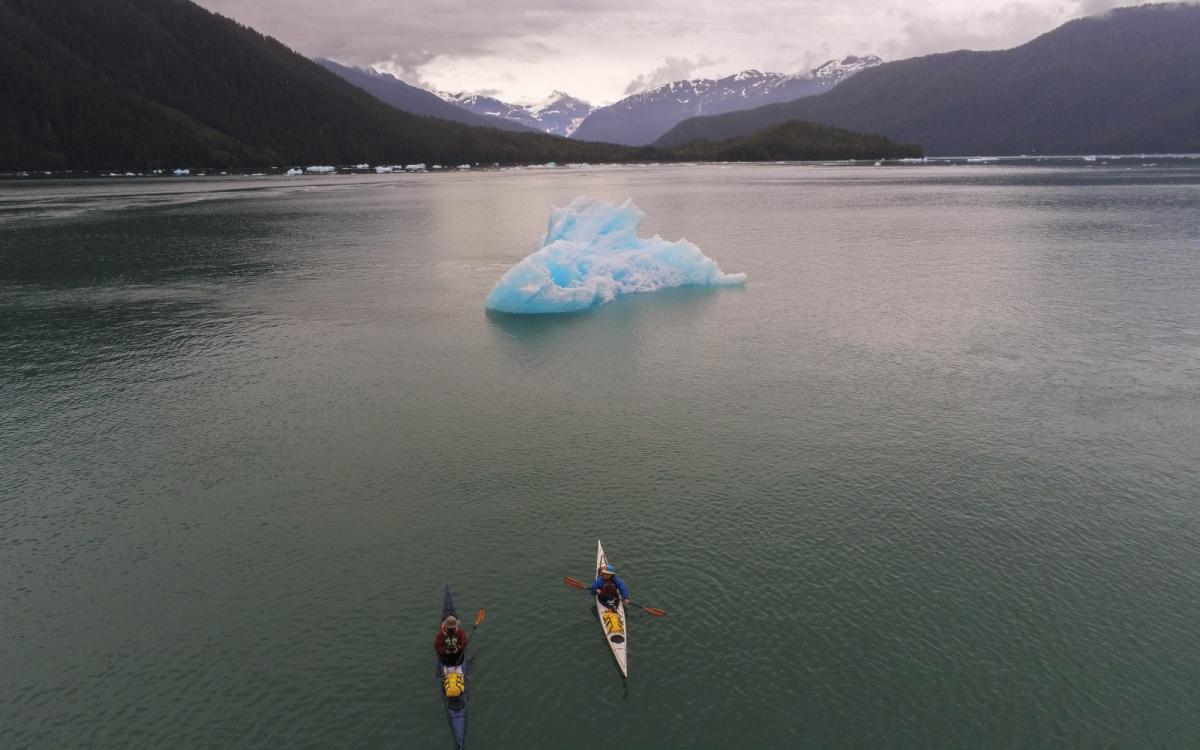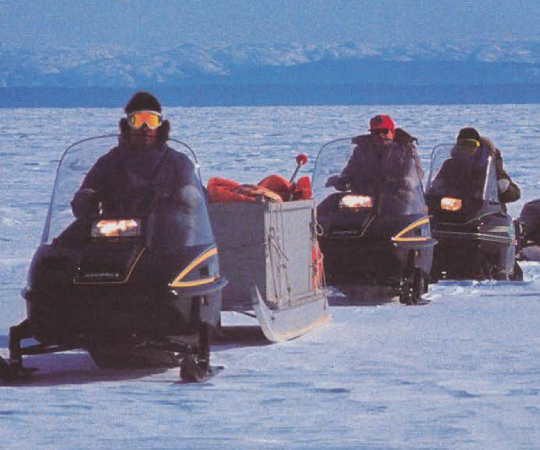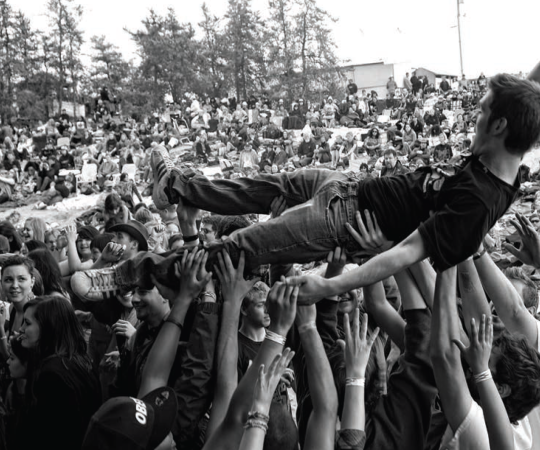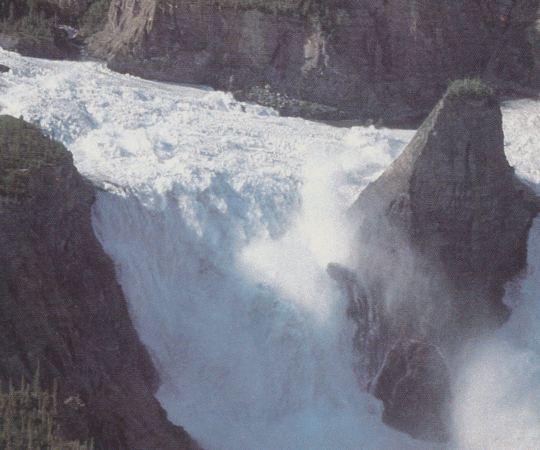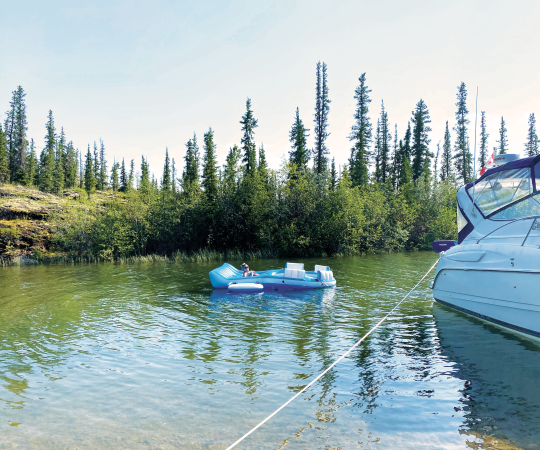Everyone seemed to be somewhere else.
The two kayakers paddled towards the shores of Bella Bella, British Columbia to stop for resupply. What they found, though, was an isolated community yet to emerge from a pandemic. The place felt eerily quiet, and signage hung barring visitors.
Peering through the dark windows of a closed grocery store, they were approached by a young boy. He told them that everything had closed for the day.
“We must have worn disappointment on our faces,” says Nuka de Jocas, “because out of the blue he says, ‘Here, take this.’” He offered them a club sandwich and fries, explaining that he’d already eaten dinner and didn’t need it.
“We proceeded to refuse, but this kid was so persistent and ultimately we were pretty hungry,” de Jocas chuckles. “We ate the food under the rain beside our boats.”
‘Have fun, eat well, don’t die.’ That was the vow de Jocas and and Chris Whittaker made when they decided to kayak the Inside Passage from Lund, B.C. to Skagway, Alaska. It took 72 days to paddle the 1,600 kilometres.
Having fun was easy. The Inside Passage is a breathtaking waterway studded with glacial islands and scenic wilderness. Not dying was the tricky part. And not because the Inside Passage is harrowingly dangerous — it’s navigated every year by boats, ferries and cruise ships — but because this particular kayaking trip took place as the North first opened up from COVID-19.
Anyone can do an expedition, de Jocas insists, as long as they’re organized. He and Whittaker spent two-and-a-half years planning their trip after they first met on Vancouver Island in 2018. It was Whittaker who suggested tackling the Inside Passage, having himself already traversed waterways in the Philippines, France, Italy and Guyana. For his part, De Jocas had previously kayaked from Montreal down the eastern seaboard to Mexico’s Yucatan Peninsula — a journey that took 15 months.
When the pandemic hit, plans changed. With de Jocas living in Yellowknife and Whittaker in the United Kingdom, getting to their starting point of Lund, B.C. was impossible. Even if the borders were open, the responsible thing was to wait.
“We didn’t want to be these two white guys paddling through these Indigenous communities and potentially putting them at risk,” de Jocas says.
Taking full advantage of the extra prep time, they personally reached out to the communities along their route and waited for the go-ahead.
They finally set off in May 2022. The first few days were calm, as the kayakers were familiar both with the area and with regular sightings of seals, sea lions and bald eagles. It took a week for the Passage to surprise them, punctuating their exit from Telegraph Cove and from familiar territory.
“All of a sudden, I feel my boat rock. It’s a fairly still day and I’m a fairly good kayaker, so I don’t understand what’s happening,” de Jocas recounts.
Correcting his boat, he saw a flash of white and wondered if his kayak had broken. Then, just a few metres away, an orca surfaced.
“So, an orca bumped my boat.”
He thinks the whale’s greeting intended to remind them that they were guests in these waters.
The duo paddled forth, averaging between 20 and 30 kilometres a day depending on wind and tides. A boating app to chart conditions was an “absolute necessity,” along with maps and a GPS. They ate dehydrated meat and rice, pasta, and oatmeal with butter, chocolate, nuts and coconut. Whittaker slept in a hammock that transformed into a bivouac; de Jocas carried a two-person tent large enough for both if needed.
“I think people sometimes forget how important sleeping is,” de Jocas says. “While camping, people think that they have to live it rough… but you need to sleep well to regain your strength.”
After Bella Bella, they paddled further north to the neighbouring community of Shearwater, where there was a resort and health lodge run by the Heiltsuk Nation. The caretakers offered shelter and stories about the community’s 14,000-year history on the land.
“We were able to talk about the numerous issues that this community faces, but also how rooted the community is on the land,” de Jocas says. “That was one awesome opportunity for us.”
Further toward Klemtu, a community in the coastal fjords of northern B.C., the waters lightly lapped against their kayaks as the pair approached houses nestled in between massive green trees.
There, they met Chief Doug Neasloss of the Kitasoo/Xai’xais Nation. They spent the evening listening to the Kitasoo/Xai’xais Nation’s history and Neasloss’ experiences protecting its traditional territory, including as a representative before the United Nations. They sat in the Big House, where massive carved totems reached the ceiling beams and the nation holds its ceremonies. The chief even invited de Jocas and Whittaker to sleep in the Big House that night.
“To be there was an absolute honour, and then to be invited to sleep, that doesn’t happen,” de Jocas says. “[Neasloss] was generous enough to give us a break from the rain, to sleep inside in a beautiful, absolutely phenomenal, important spiritual place.”
The next day, they packed their gear into Chief Neasloss’ motorboat and he brought them out to sacred ground, where they watched grizzly bears graze from a distance. There the duo unpacked their kayaks from his boat and parted ways.
They had few other interactions until they docked in Alaska, as many communities were still completely closed. With the exception of two paddle boarders and two other kayakers, the Inside Passage was deserted.
“We met other folks on their sailboats, but it was a strange feeling: people were delighted to finally be out there, but everyone was very cautious,” de Jocas says. “The pandemic was a huge hit on these communities.”
Their next major stop was in Prince Rupert, where de Jocas briefly left the expedition to fly west for a wedding in London, Ontario.
While plotting the trip, he explains, it was important to communicate boundaries, emergency plans, and find middle ground with his partner back home in Yellowknife, especially since the two had a baby boy over the pandemic.
“It’s funny, but one of the concessions I had to make was that my partner’s brother was getting married,” de Jocas says. “I had to figure out a way to get to that wedding… So that was a very, very funny moment.”
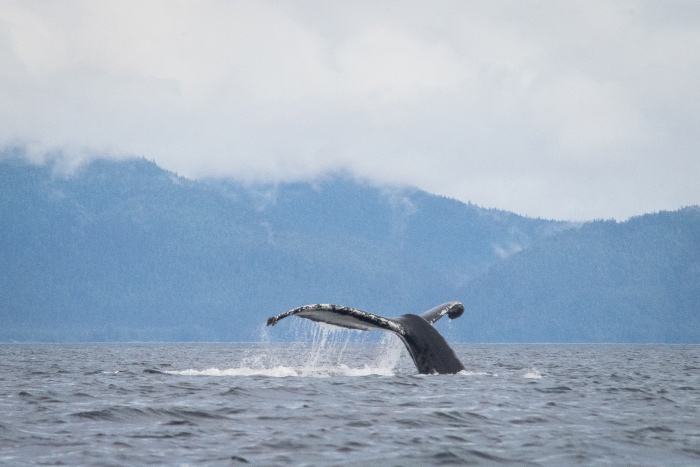
After a few sweet days of civilization, de Jocas returned to Prince Rupert and they continued.
As they travelled further North, they found Alaska back in business. De Jocas watched the population of Ketchikan swell to tens of thousands as cruise ships emptied into the streets.
“That was surreal,” he says. “It was kind of an interesting dynamic, where you have this pristine wildlife… and then suddenly cities on the water, thousands of people passing you by, and they don’t notice you, but you notice them.”
The trip wasn’t entirely without mishap — de Jocas contracted COVID-19 in Juneau, Alaska, and battled a fever, muscle pain, a cough and fatigue for the remaining 60 kilometres to Skagway.
“It took everything I could give to stay afloat,” he says, adding that the first day of illness was “devastating” for his body. “I was very close to thinking that I might not make it.”
Thanks to preparation, de Jocas had packed a portable pharmacy of medication to help him fight his symptoms, and he persevered to the finish line.
“Things were surreal when we were done,” he says, describing arriving in Skagway and immediately handing their kayaks off, which they’d owned only temporarily for the journey, and suddenly appearing on foot as tourists in a city overrun by cruise traffic.
They popped a bottle of champagne on the shore, explaining what they’d just accomplished to a group of curious campers nearby, who quickly joined the celebration.
After a few days spent in Skagway, de Jocas departed to Whitehorse, where his partner and son had travelled from Yellowknife to meet him, while Whittaker flew back south before returning to the U.K.
Now working long-distance again, de Jocacs and Whittaker have produced a 10-part YouTube series dubbed For Fun’s Sake, using the plethora of camera and drone footage they collected.
“Chris [Whittaker], God bless him, he had that drone between his legs in the cockpit for two months,” de Jocas says. “It was quite amazing of him, and it permitted us to get some absolutely phenomenal pictures and videos.”
The YouTube series is candid, de Jocas continues — breathtaking views paired with two friends laughing, chatting and persevering.
“It’s about us sharing our perspective of what expedition life can be like,” he says. “We want it to be accessible.”
Funny, unscripted, also a little raw — the footage de Jocas and Whittaker took captures a unique moment in time and an unforgettable experience.
